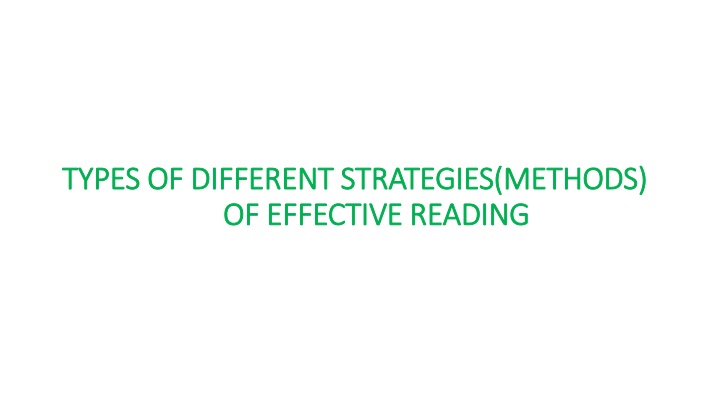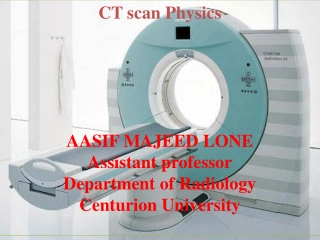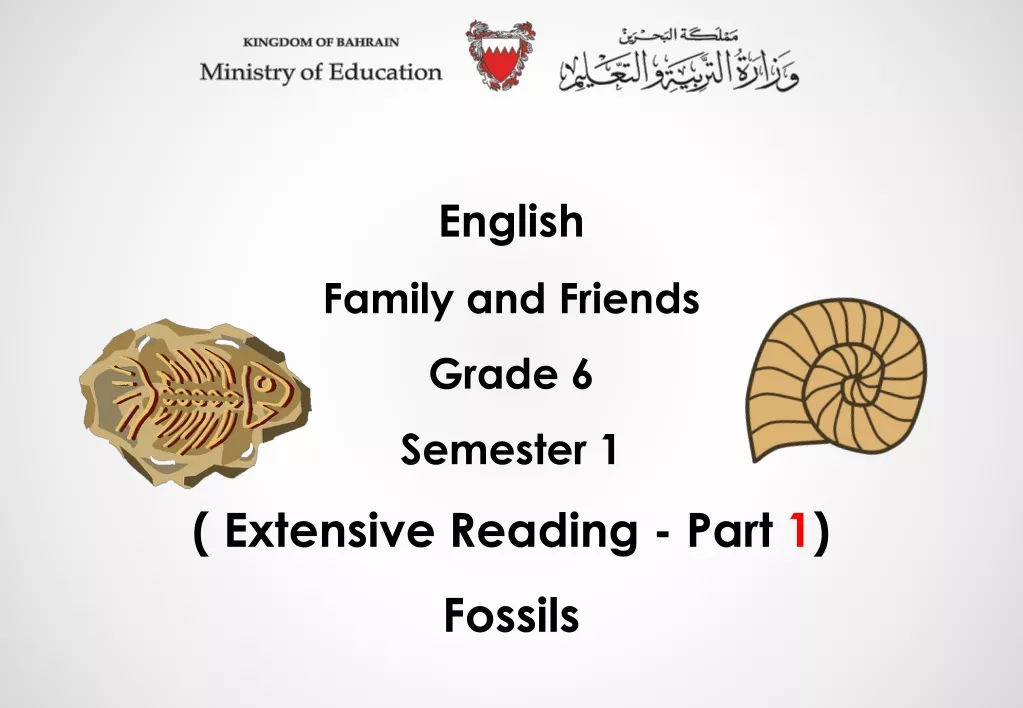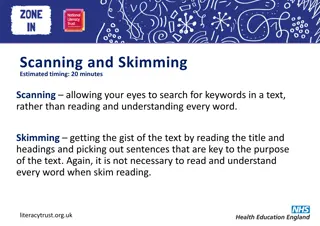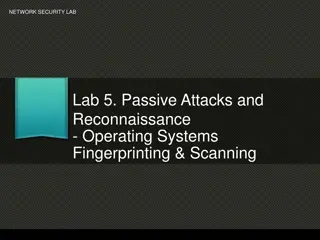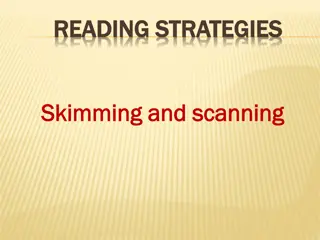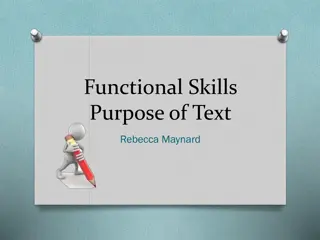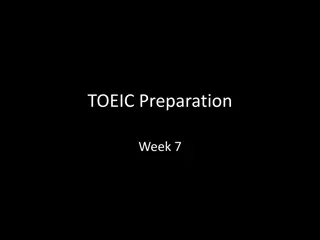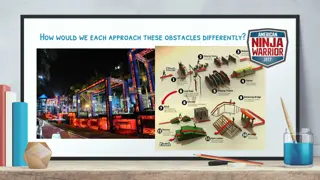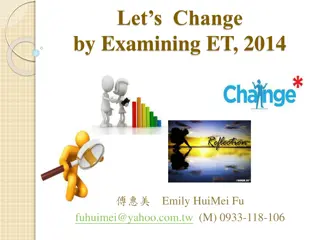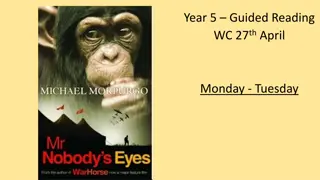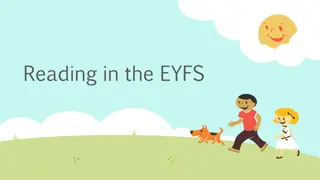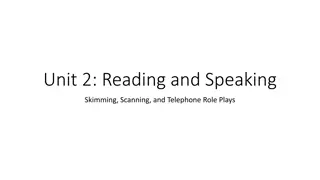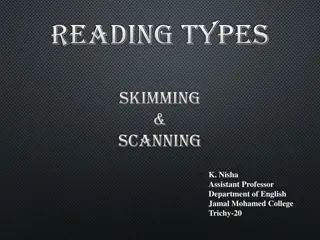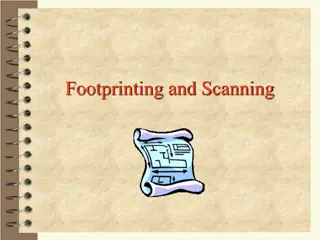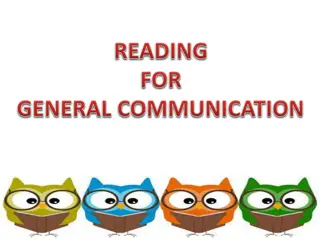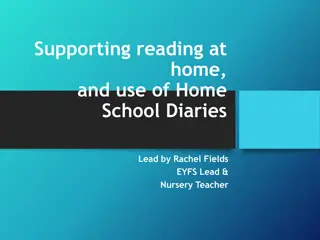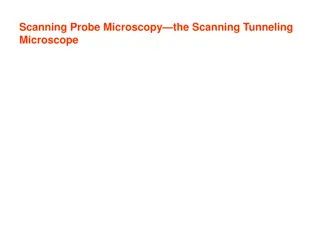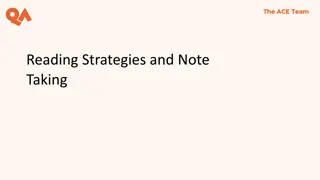Effective Reading Strategies: Skimming, Scanning, Intensive, and Extensive
Discover the four types of effective reading strategies - Skimming, Scanning, Intensive, and Extensive - each with unique characteristics and purposes. Skimming allows quick grasping of main ideas, Scanning helps in finding specific information, Intensive reading focuses on details, and Extensive reading is for pleasure. Understand how to utilize these strategies for efficient reading comprehension.
Download Presentation

Please find below an Image/Link to download the presentation.
The content on the website is provided AS IS for your information and personal use only. It may not be sold, licensed, or shared on other websites without obtaining consent from the author.If you encounter any issues during the download, it is possible that the publisher has removed the file from their server.
You are allowed to download the files provided on this website for personal or commercial use, subject to the condition that they are used lawfully. All files are the property of their respective owners.
The content on the website is provided AS IS for your information and personal use only. It may not be sold, licensed, or shared on other websites without obtaining consent from the author.
E N D
Presentation Transcript
TYPES OF DIFFERENT STRATEGIES(METHODS) TYPES OF DIFFERENT STRATEGIES(METHODS) OF EFFECTIVE READING OF EFFECTIVE READING
How many strategies are used to develop How many strategies are used to develop reading? reading? There are FOUR types: (1) Skimming , (2) Scanning, (3) Intensive reading , and (4) Extensive reading.
1. What are the basic characteristics of 1. What are the basic characteristics of Skimming (gazing)? Skimming (gazing)? Skimming is the process of quickly viewing a section of text to get a impression of the author's main argument, themes or ideas. There are three types of skimming: preview, overview, and review. 1. To get a general idea of a text. 2. To identify your reason for reading. 3. To understand a writer s attitude. 4. To read the text quickly. 5. unnecessary to understand every thing. 6. To look at the first and last sentences. 7. To summarize the main points.
2. Scanning (gazing) and Its 2. Scanning (gazing) and Its B Basic Features asic Features 1. Reading quickly to find particular pieces of information. ( statistic, a date, a persons name, the name of a place ) 2. We do not need to read every word to find information. 3. Using a finger or a pencil to move quickly through the words.
3. Intensive Reading 3. Intensive Reading 1. Reading is for every detail ( a description of a process, a results of a scientific study , or a set of literature text) 2. To stop and think what you are reading. 3. You may read the text more than once. 4. To make notes or highlight important points for future reference. 5. It is called Study Reading.
4. Extensive Reading 4. Extensive Reading 1. Reading is for pleasure and interest. 2. We may concentrate , but we don t have to worry about detail. ;;;;;;;;;;;;;;;;;;;;;;;;;;; Notes: We often use more than one method of reading for a single text.
IMPORTANT HINTS: IMPORTANT HINTS: 1. We often use more than one method of reading for a single text. 2. Skimming and Scanning are the quickest ways of reading. 3. People usually read extensive reading for pleasure. 4. Intensive Reading is the slowest way of reading.
